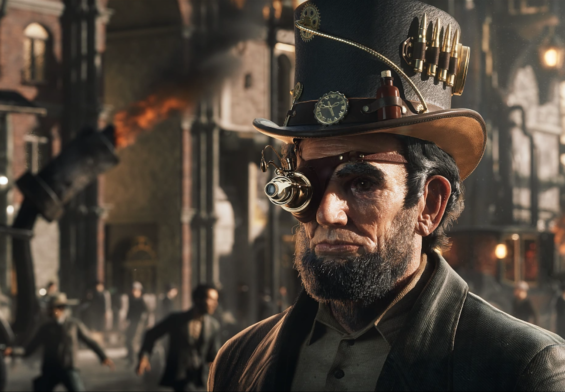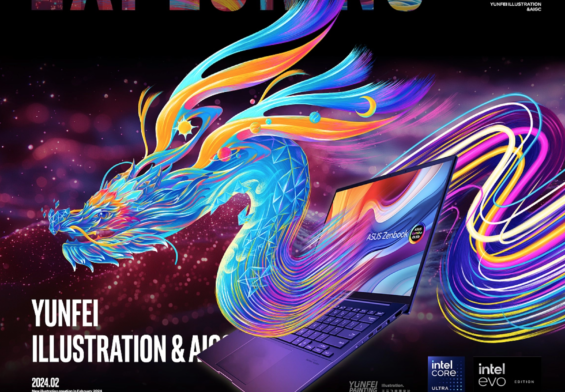By ArtiZen Editorial Team
Prelude –Three continents, Three art verticles, in his 30th.
Born and raised in China, worked in France, Canada, and now the United States, Yan Shu is an excellent versatile digital artist who spent the past 15 years of his academic and work experience pursuing the ultimate truth of art through developing multi-faceted art skills in different verticles and gaining experiences from game studios of drastically different culture across the world.
His art style tempts to convey feelings of majestic Grace, beauty, serenity, and a sense of Wabi-sabi(a Japanese aesthetic philosophy emphasizing asymmetry and imperfection ). Shu Yan is recently hosting artwork exhibitions both in the US and Asia, here we interviewed him to get a glimpse of his career growth path as well as an update on his lately in-person sharing with the global art community at home and abroad.
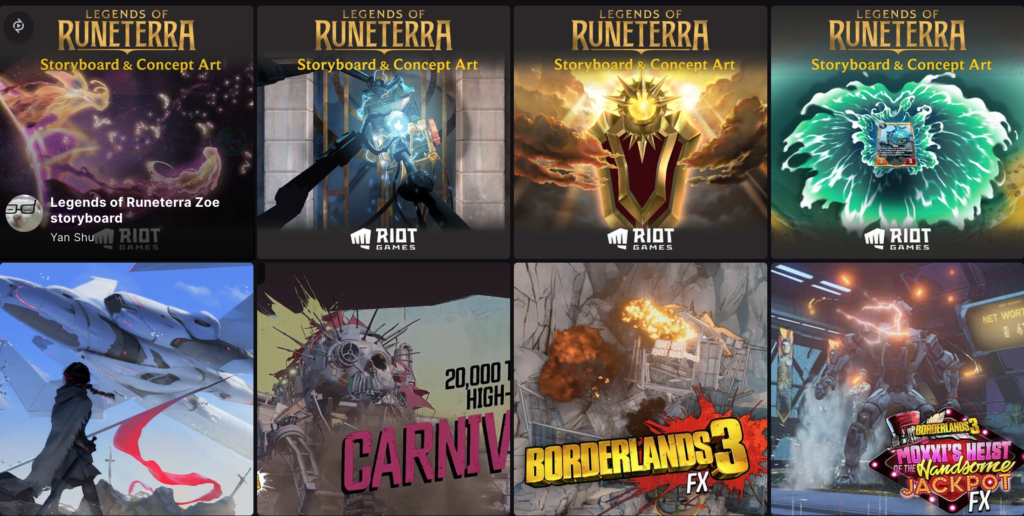
Introduction and Personal Experience
1. When did you start to learn concept art/illustration and VFX? What prompted you to enter the art space?
My career has spanned three continents and four countries, where I’ve gained experience as a concept artist, programmer, VFX artist, technical artist, and art lead/Manager, has been a continuous exploration.
I started my art journey as a concept artist in Shanghai, China, working at studios such as Virtuous Games and Spicy Horse Games and on diverse projects, like the cross-platform game Akaneiro: Demon Hunters, which deepened my passion for game development.
Driven by curiosity, I pursued a master’s degree at CNAM in France, merging VFX and concept art into my game development career. My cross-disciplinary approach continued through various roles in France, and Canada. I worked full-time in VFX at Ubisoft in Canada, enriching my career. At Gearbox Software, I contributed to the acclaimed game Borderlands 3, focusing on VFX, cutscenes, and material techniques for the main game and its three DLCs.and eventually transitioned to the USA. At Riot Games in Los Angeles, I returned to my roots of concept art and illustration, contributing to the success of games like League of Legends and Legends of Runeterra.
2. We saw you worked in both Asian and Western game studios, what cultural difference did you feel about working at AAA companies such as Mihoyo, Ubisoft, and Riot? Are there any creative guidelines that can distinguish the art styles between the East and West?
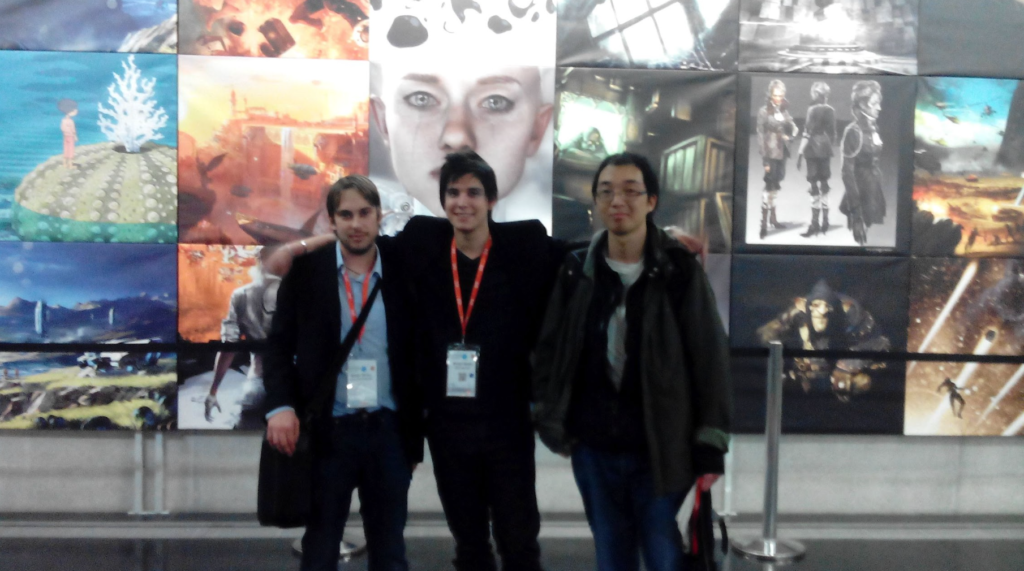
For my experience of working in China, France, and Canada, tasks were often clearly defined with detailed task lists for artists. Working in the US, I was encouraged to explore independently as a game developer. Different work values and approaches influence my art style, sometimes my artwork is more detailed and refined, but sometimes my work is trying to incorporate more innovative game developer perspectives.
3. What’s your favorite art sub-genre? VFX, technical art, concept art, or storyboard? How did you learn each skill and how do you combine them to create a complete artwork?
All these disciplines fascinate me in different ways. Concept art releases my imagination, storyboarding allows me to tell a story, VFX empowers me like a wizard casting spells, and technical art builds my computer graphics knowledge and workflow efficiency. I’ve learned each skill through dedicated practice and experience. I combine them to create complete artwork, such as using shader tricks and particle systems for motion graphics based on my illustrations. In some games, I use storyboards as blueprints to inspire clear in-editor game realization.
Skills, Styles and Projects
4. Any VFX/Concept art guidelines for in-house artists? like the VFX design principles, balance satisfaction, and gameplay clarity.
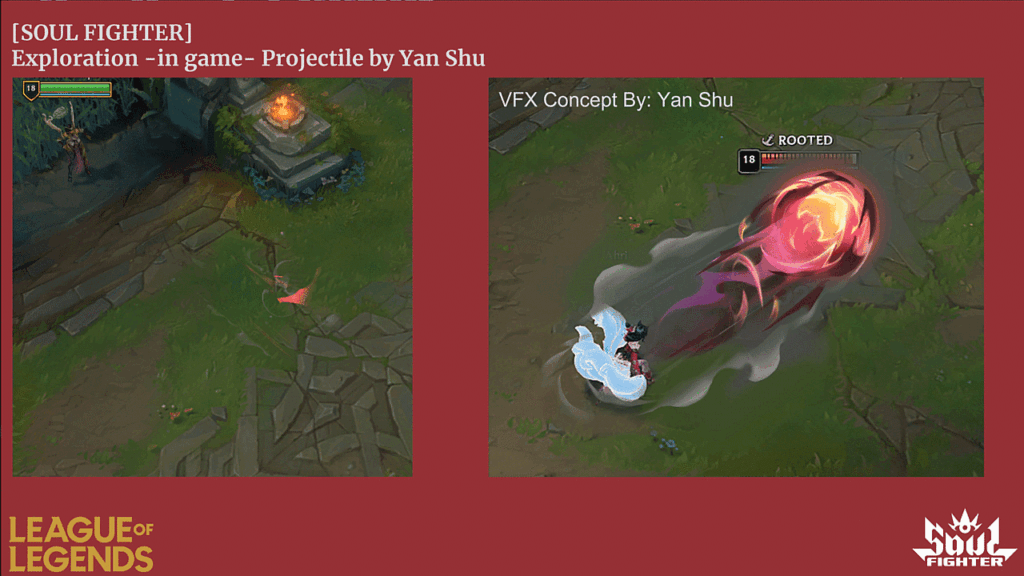
Both VFX and concept art play crucial roles in game development. For instance, VFX can enhance in-game feedback like character abilities like combat and spells or environmental ambiance such as space nebulae or volcanic smoke. Concept art inspires other art disciplines such as 3D, animation and ensures cohesive art styles while visualizing early-stage ideation and exploration. Ultimately, these elements work together to enhance player experience by delivering intended visuals, narrative coherence, and readability in the game.
5. I saw you did multiple art pieces for Runeterra, which one are you proud of most? What’s the creation process from ideation to animation?
One of the art I made for Runeterra that I’m most proud of is Zoe’s storyboard task. It was an enjoyable experience crafting Zoe’s story through her distinctive shape language, lighthearted color palette, and playful motion. The creation process started with inspiration from card illustrations, particularly spell cards, which I translated into VFX through storyboarding. Using in-game placeholder block-ins helped visualize the flow, and storyboards served as a communication tool to align gameplay with Zoe’s artistic style. Our realization art team contributed their ideas, bringing the concept to life in the game and eventually on players’ screens.
6. Boarderland 3, Runeterra and League of Legends have very different art styles, how did you transition from one style to another or adapt to a new project? what preparation would you do before you join a new project/team?
Transitioning among Borderlands 3, Runeterra, and League of Legends involves adapting to distinctive art styles. Each game, though stylized, varies significantly in player perception, from character anatomy proportion, rendering techniques to shading and detail levels in shapes and colors. Moreover, their genres—shooter, card game, and MOBA—demand different gameplay clarity and readability.
Before working on a new project or with a new team, I prioritize studying the style guide carefully. This guide defines the visual direction and specific aesthetic goals of the game, ensuring alignment with the team’s artistic vision and maintaining consistency throughout the project’s development phases.
I also made an example of a VFX style guide when I was working on League of Legends’ “Soul Fighter” VFX style guide.

7. How do you define your own VFX style? What’s your favorite theme?
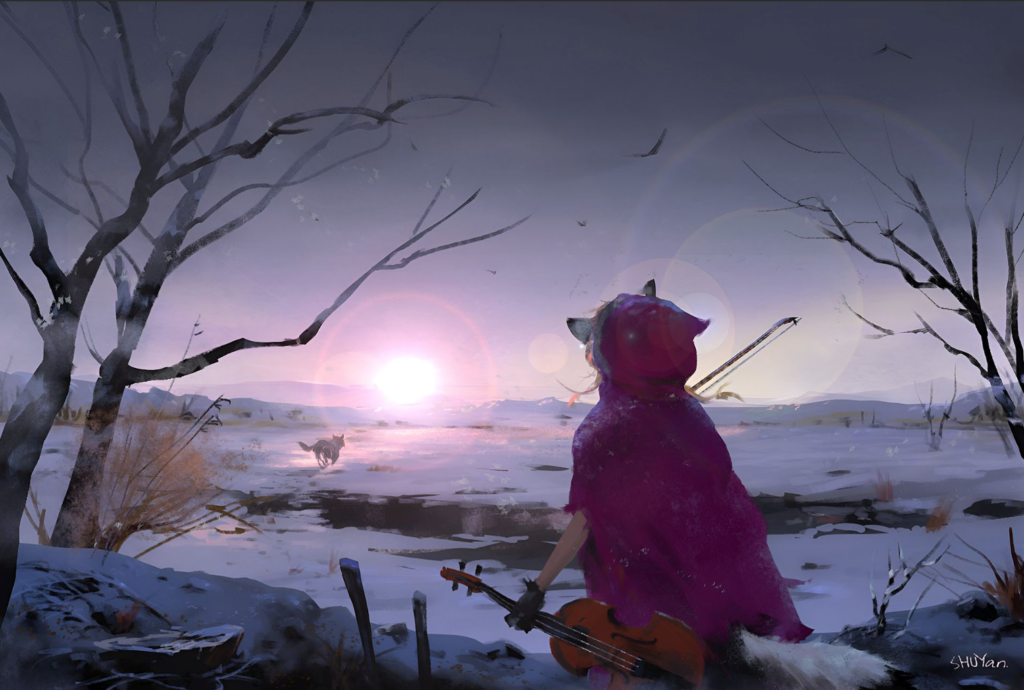
After several years working on VFX, I find that rather than defining a specific style such as “Sci-fi” or “Cartoon”, I’m drawn to conveying emotions such as Majestic Grace, beauty, serenity, and a sense of Wabi-sabi. These themes resonate deeply with me and influence the VFX I enjoy creating the most.
8. What art form inspires you most? Who is your favorite VFX artist that you look up to and why?
I draw inspiration from various art forms like painting, movies, and music. Even other inspirations like novels, literature, and landscapes. What matters most to me is the emotion I feel in those moments. I deeply admire the VFX artists I’ve collaborated with at Riot Games. Their talent and dedication in a long-running game like <League of Legends> have been incredibly inspiring to me.
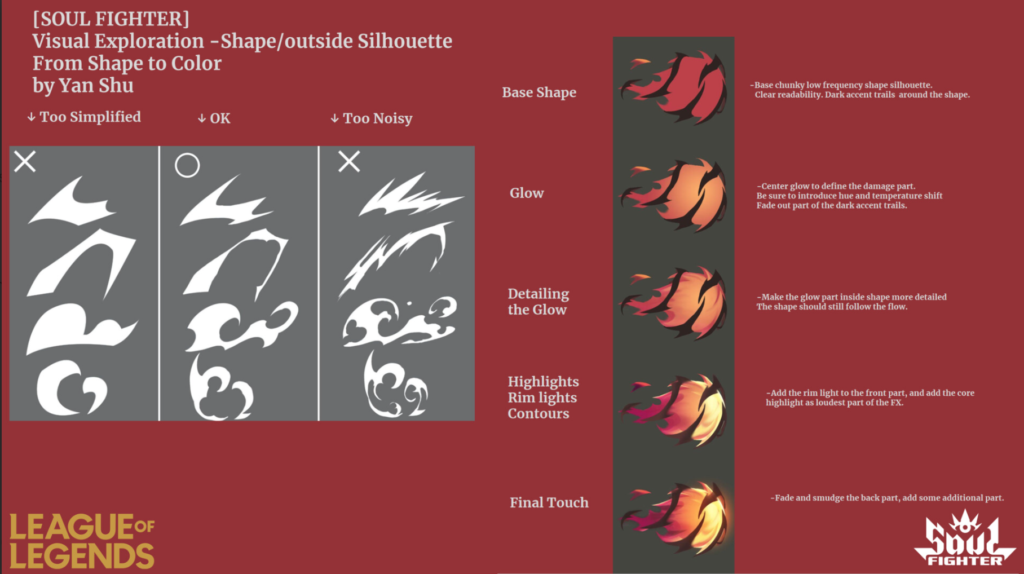
Tips and Advice for Novices
9. Any tips for early-career VFX/concept artists? or college students who are still studying for an art degree. Any internship interview suggestions?
For early-career VFX/concept artists or college students studying art:
The role of a game artist has evolved beyond creating beautiful visuals; it’s about crafting player experiences. Art sets the mood and guides players, but it must be player-centered. Career growth hinges on crafting unforgettable player experiences. Understanding the art-gameplay connection, embracing a player-centered approach, and aligning work with player desires can lead to success in the professional community and contribute to the gaming industry’s growth. It’s about enhancing player lives worldwide through art and advancing one’s career accordingly.
Art Exhibitions in Alhambra and Beijing
Your last Solo Exhibition ‘The Pathseeker beyond the Horizon’ took place on May 1st at Gallery Nucleus in Alhambra was very successful. Local industry professionals from Alhambra and Los Angeles came and shared their unique insights of digital art, and the exhibition also extended to China Central Academy of Fine Arts in Beijing on May 27th. Tell us about the artworks showcased and the career journey you talked about at the exhibitions.

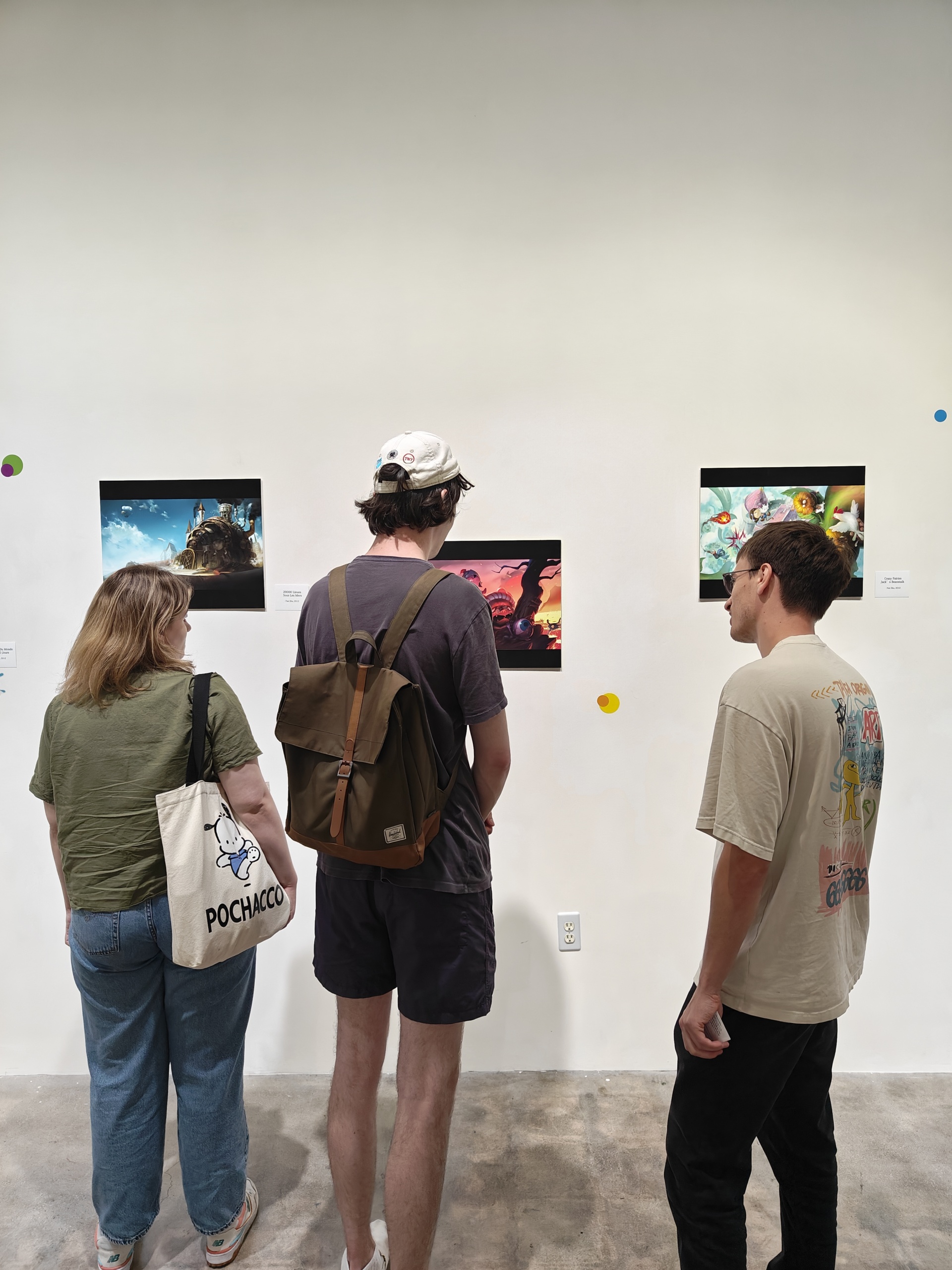
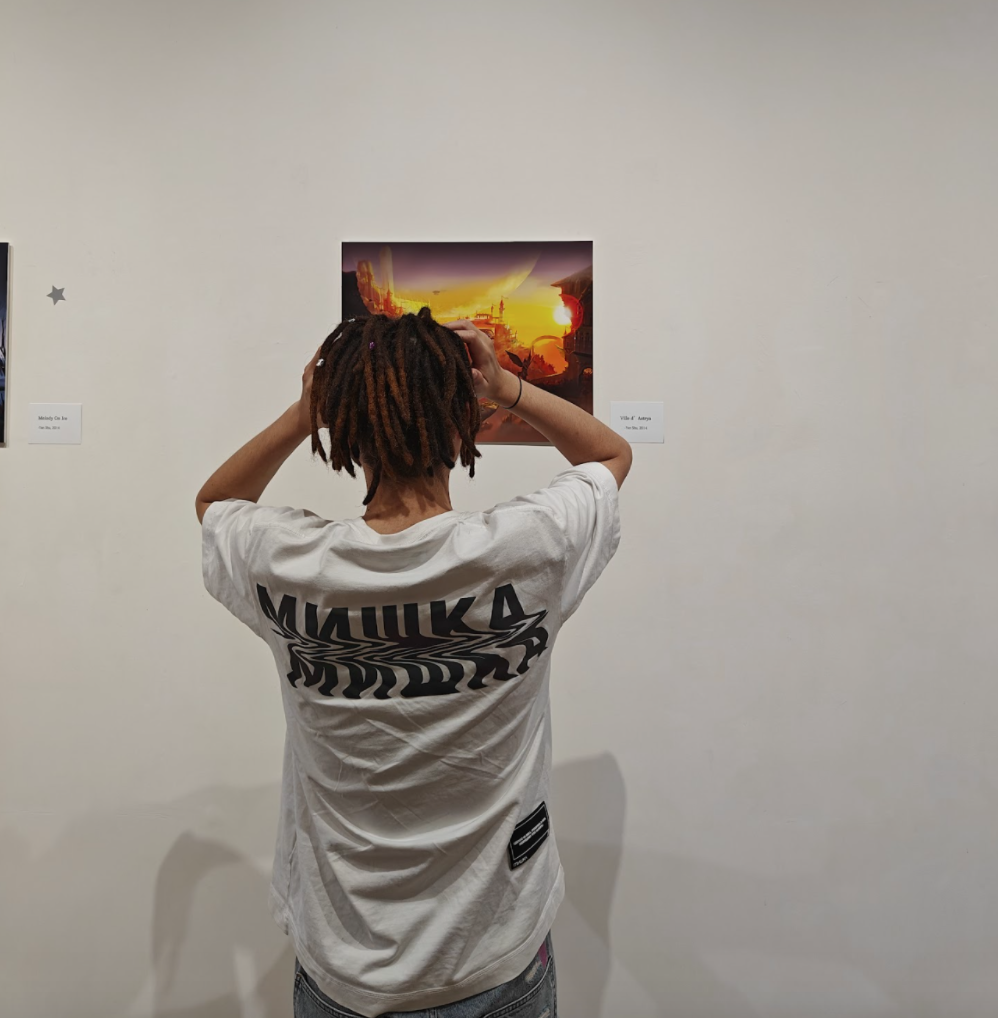

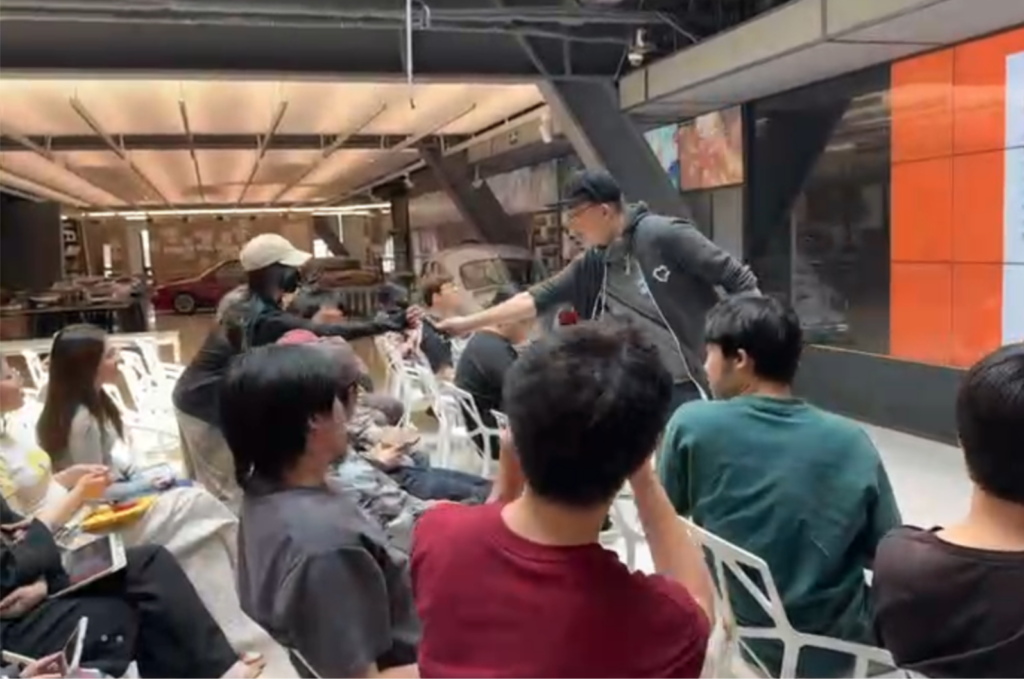

Among the highlight artworks was my iconic piece, ‘Chaser of the White Dragon,’ which depicts a knight encountering a mysterious aircraft, symbolizing the commencement of an enigmatic journey, similar as I started my 1st overseas travel to France. Another featured work was “City of Astrya” originally crafted for the French game ‘Edge of Eternity.’ This piece offers viewers a glimpse into a fantastic cityscape adorned with airships and floating gardens, previously exhibited at the Musée Fabre in Montpellier, France.
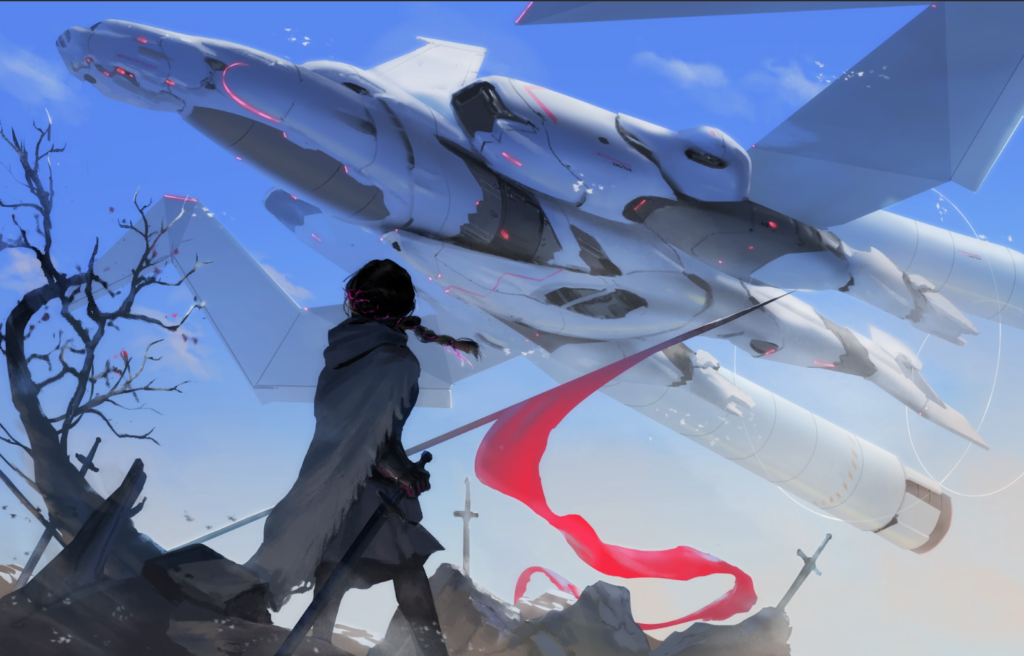
(Chaser of the White Dragon)
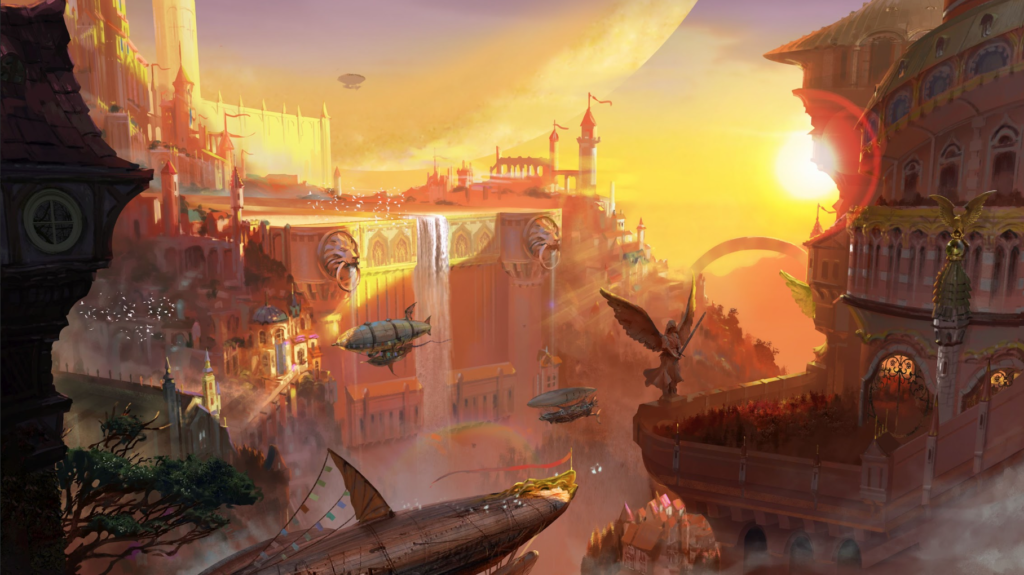
(City of Astrya)
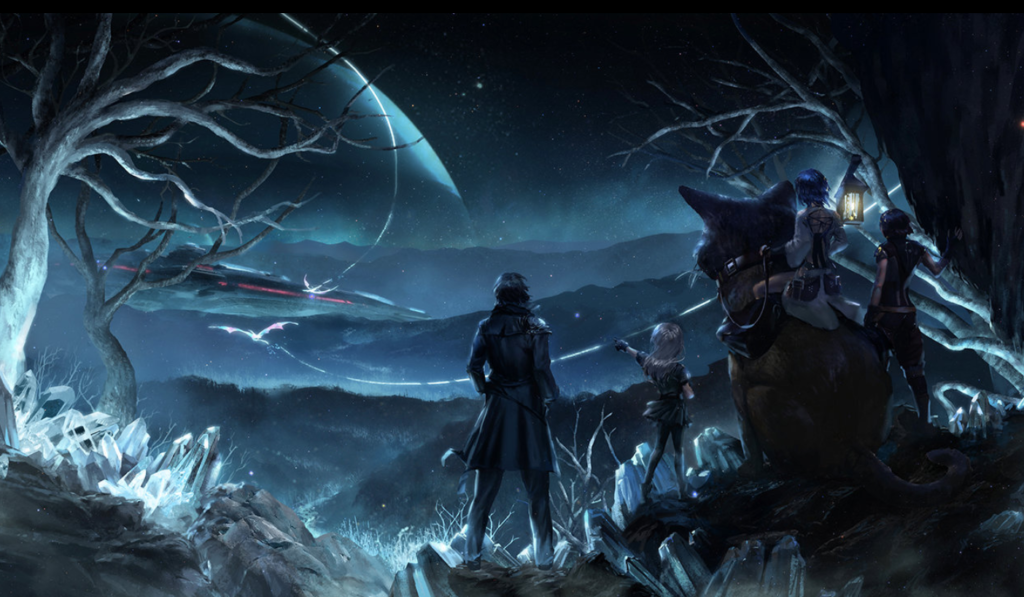
(Edge of Eternity)
The different digital arts I showcased helped facilitate my cross-cultural communication, transcending boundaries across China, France, and Canada, and finally landing here in the United States.
And it’s meaningful to have the same exhibition in both the US and China, echoing where I started and where I am now in my art journey.
This is an original interview conducted by ArtiZen with the artist. If you are a media and interested in reposting this article, please get in touch with our editorial team for reposting policy. [email protected]



